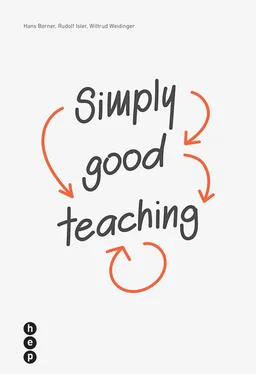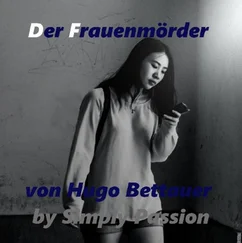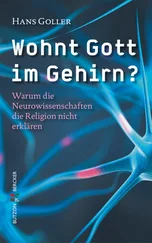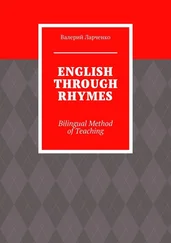
Title of the original edition:
“Einfach gut unterrichten”
© 2018 hep verlag ag, Bern
Hans Berner, Rudolf Isler, Wiltrud Weidinger
Simply Good Teaching
ISBN Print: 978-3-0355-0902-1
ISBN E-Book: 978-3-0355-0906-9
Content design: Philippe Gertsch
Cover design: hold Kommunikationsdesign
Illustrations: Serafine Frey
1st edition 2018
All rights reserved
© 2018 hep verlag ag, Bern
www.hep-verlag.com
TABLE OF CONTENTS
A short preface to “Simply good teaching”by Andreas and Tuyet Helmke
Introduction
1. What is good teaching ?Key characteristics of successful teaching from a teaching research perspective
2. Learning through direct instructionThe most important forms of learning-oriented teaching
3. Learning through cooperationThe interplay between individual and social learning processes
4. Learning through dialogsPersonal learning in dialog with others and the subject matter
5. Learning through lesson organizationThe value of working with weekly plans, workshops, studio learning, and main lesson blocks
6. Learning through projectsStudent and activity-oriented approach with socially-relevant topics
7. Learning by playingThe use of games in teaching to promote competences
8. Learning support and assessmentFunctions and forms of a learning-conducive assessment of student performance
9. Good teaching entails structured planningPathways to a personal theory-based planning scheme
10. Good teaching entails differentiated reflectionBecoming smarter through feedback and differentiated reflection
Closing Words
Bibliography
List of Figures
A short preface to “Simply good teaching”by Andreas and Tuyet Helmke
A SHORT PREFACE TO “SIMPLY GOOD TEACHING” by Andreas and Tuyet Helmke
“What is a practitioner ? It is a person who is fully functional but does not know why. What is a theorist? It is a person who knows how things work, although they are not functional at all” (Wahl, 2013). However, the vision of a good teacher – and successful teacher education – is a successful linking of scientifically-based, connectable and applicable knowledge and good practice. To that end, good teaching materials can play a decisive role; they can ease and facilitate the acquisition of competences or they can also render it more difficult. In our opinion, the present book, first of all, belongs to the former category. It is “simply good”. But in what way?
When reverting to the opening quotation, taken from Wahl’s book “ Lernumgebungen erfolgreich gestalten ” (Shaping learning environments successfully), the book characteristic subtitle, “From inert knowledge to competent action”, says it all. What can be done to avoid the possibility that a book about teaching is not just consumed in a passive-receptive manner, resulting in the creation of “inert knowledge” that is not usable and practicable? In adapting the well-known bible quotation in reverse order, “For they know not what they do” (Luke 23, 34), the situation could be described as “For they do not know what they think they know”: There is no access to knowledge, because it was acquired in a way that blocks its practical application. The three authors demonstrate in this book how to proceed didactically to avoid inert knowledge as far as possible through the inclusion of numerous intensive tasks designed for criteria-guided self-reflection and observation, coupled with requests for exchanging information. The chapters about the scenarios and methods of teaching are structured identically and retain the following permanent structure: (1) a brief introduction to the topic, (2) detailed work assignments with the objective of making a connection to one’s own prior knowledge and experiences (“ These are your tasks ”); (3) mediation of basic concepts and results of empirical research (“ You must know this ”); (4) suggestions for practical implementation (“ How to apply this ”); and (5) detailed and diverse exercises and examples for practicing and deeper understanding.
We deem the linking of subject matter with manifold variations of cognitive activation particularly functional in order to avoid the disastrous “inert knowledge”. It is therefore practically impossible to just “read through” this book without engaging one’s reflection and playful imagination. There are numerous publications about the topic of “Good teaching”, “The quality of instruction”, etc. – from classical textbooks to guidebooks and recipe collections, to descriptions of individual procedures and styles. The extensive reflection component and practical orientation of this book represents, in our view, a unique characteristic. The authors thus created a quasi unique genre; a combination of textbook, workbook and practice book.
It is a good idea to begin the book with a chapter about cross-curricular principles and quality characteristics of teaching, which is oriented to the current state of research, such as the study by Hattie, among others. Then follow the chapters with the “real beef”, i.e. different didactic concepts and scenarios, as well as the indispensable tools. We intended the preceding chapter about interdisciplinary subject and methodological quality characteristics as a message: None of the subsequently described approaches and teaching procedures are good and learning-effective per se. Any one of these methods can be implemented brilliantly or in a dilettante like manner, inspired or fanciless, learning-conducive or detrimental to learning. As expressed by Hattie with this in mind: “It is less the methods per se, but the principles of effective teaching and learning.” (Hattie, 2014). However, to infer from this that methods do not matter would be a grave misunderstanding. The mastery – solid knowledge and practical mastery – of a reasonable number of teaching and learning methods is an integral part of teaching professionalism – and with it a necessary but not sufficient (!) precondition for learning effectiveness. In light of the existing great variety of learning requirements within school classes, the concept of fairness alone demands offering different teaching and learning scenarios. Thus, it has been known for a long time from research about interdependencies of student characteristics and teaching methods (“Aptitude-Treatment Interaction”, ATI), that top-performing, language competent and self-assured students benefit more from open forms of instruction where the teachers recede more into the background, whereas students at risk from the opposite side of the spectrum may be overwhelmed by a great deal of freedom for self-regulation. These students require clear, teacher-directed structures (“scaffolding”), intensive small-step guidance, and task-related feedback, as well as many opportunities for practicing and learning reinforcement.
We share the opinion of those who deem it appropriate that three authors do not assess the methods presented by them in terms of quality or learning effectiveness, but rather consider them in terms of an appropriate balance of class situation and subject-didactic context, an acceptable dosage and appropriate “orchestration”, which Hilbert Meyer vividly describes as “mixed forest”. But caution: the characteristic “variety of methods” is often misunderstood in the sense of “the greater the variety, the better” (to which we do not subscribe), as it assumes an implicit linear relation between the number of methods used and learning effectiveness. However, research shows that it is not a matter of maximum but rather an optimum; the relationship between method variety and learning success is not linear, but conversely U-shaped, as borne out by our state-wide total survey called MARKUS in Rhineland-Palatinate. Too many, not thoroughly rehearsed and truly mastered teaching and learning scenarios rather cause confusion and are as detrimental to learning as a monoculture of teacher-centered frontal instruction.
Читать дальше













